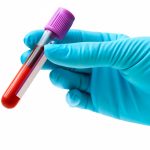 Extracting blood is something that is a daily experience for many people, but the process can often be incredibly painful and laborious. Researchers from Rutgers University-New Brunswick believe they’ve come up with a robotic solution to help not only with drawing the blood but analyzing it.
Extracting blood is something that is a daily experience for many people, but the process can often be incredibly painful and laborious. Researchers from Rutgers University-New Brunswick believe they’ve come up with a robotic solution to help not only with drawing the blood but analyzing it.
The work, which was described in a recently published paper, has the potential to significantly improve the workflow in hospitals whilst allowing practitioners to spent more time with patients.
“Integrating miniaturized robotic and microfluidic (lab-on-a-chip) systems, this technology combines the breadth and accuracy of traditional blood drawing and laboratory testing with the speed and convenience of point-of-care testing,” the researchers explain.
The device is completely automated and uses an image-guided robot to draw the blood from the arm of the patient. The sample is then analyzed internally via a centrifuge-based blood analyzer.
Automating healthcare
Performing diagnostic blood testing is quite probably the most common clinical procedure in the world. What’s more, it also influences a huge number of medical decisions in both hospitals and laboratories. It’s a process that can be error-strewn however, with success usually dependent upon both the skill of the clinician and the physiology of the patient. Equally, the analysis process is incredibly bureaucratic, with most analyses performed in centralized labs that perform huge numbers of tests per day.
The device is capable of providing highly accurate results from a simple white blood cell test. It does this by utilizing a blood-like fluid that is spiked with fluorescent microbeads. The testing process then uses artificial arms complete with plastic tubes that serve as blood vessels. The team believe the device can perform rapid tests whilst at the bedside, in the emergency room, clinics or even in the ambulance on the way to hospital.
“When designing the system, our focus was on creating a modular and expandable device,” they say. “With our relatively simple chip design and analysis techniques, the device can be extended to incorporate a broader panel of tests in the future.”